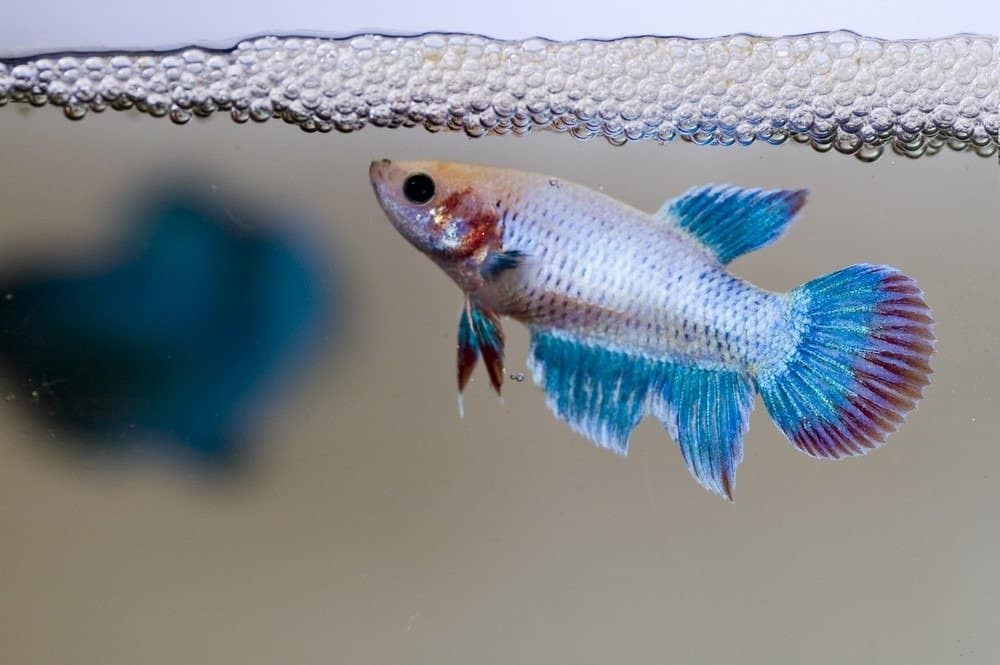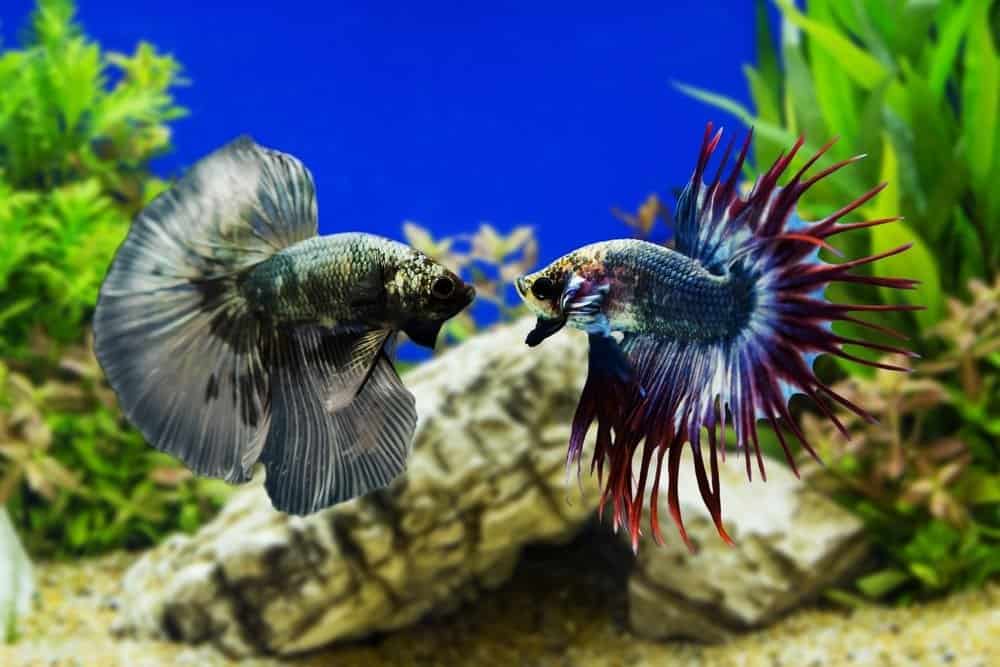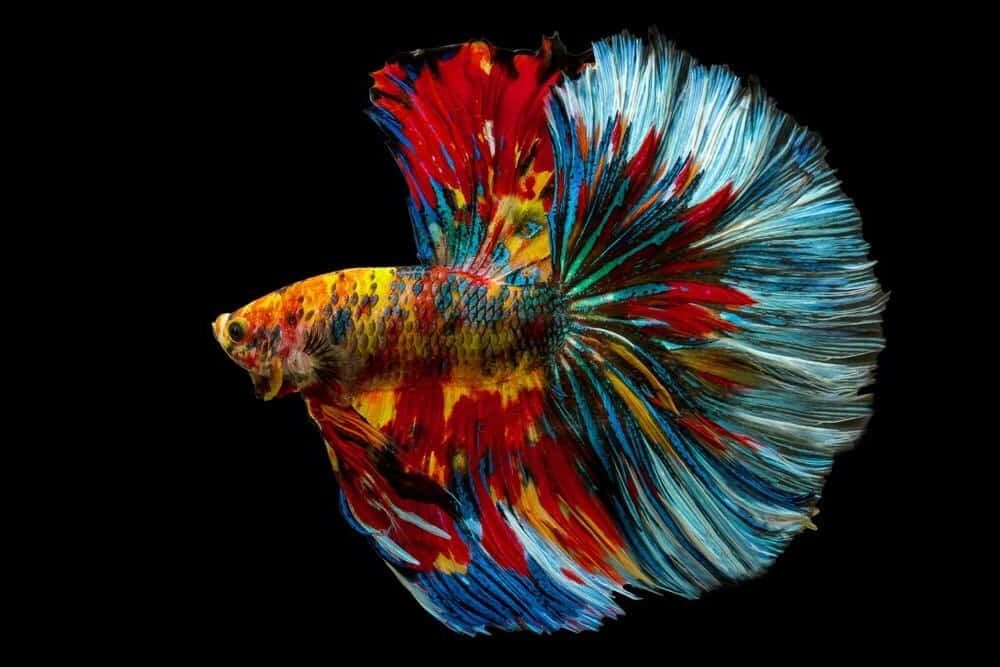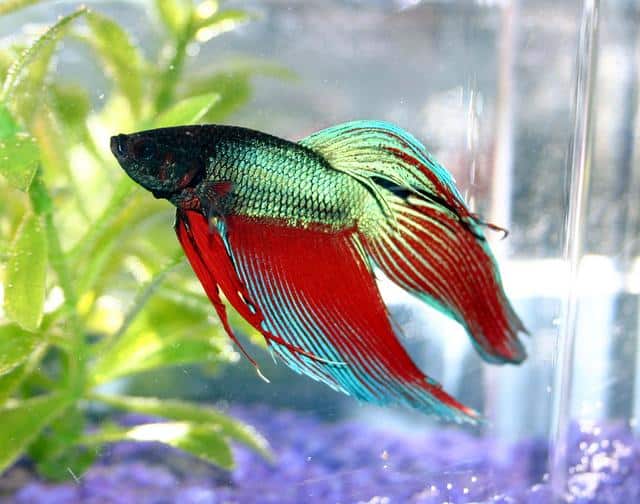If you’re looking for a pet that is both beautiful and fierce, then you can’t go wrong with a Siamese fighting fish. The are also known as betta fish. These vibrant creatures are native to Southeast Asia and have been prized by royalty and commoners alike for centuries. Today, they are one of the most popular freshwater aquarium fish in the world. With their long, flowing fins and bright colors, it’s easy to see why bettas are so popular. But there’s more to these fish than meets the eye. Let’s take a closer look at these feisty creatures with ten incredible Siamese fighting fish facts!
They Can Breathe Air
If you’ve ever watched a Siamese fighting fish or betta for a few minutes, you may have noticed that they often swim up to the surface of the water for a quick gulp of air. They have gills and can filter oxygen from the water like most fish. Siamese fighting fish can also breathe oxygen directly from the air! Siamese fighting fish can breathe air because they have a special organ called a labyrinth. It has tiny blood vessels that help transport oxygen to the rest of the body.
Because they are labyrinth fish, Siamese fighting fish can live in habitats and environments with less oxygen for longer periods of time. In the wild, these fish live in water that has little oxygen, so having a labyrinth organ helps them to survive. If a Siamese fighting fish finds itself in a tough spot with little to no water, it can stay alive for longer than other types of fish, as long as its body stays moist. However, these fish will die on land if they cannot get back into the water.

A Siamese female fighting fish guarding her newly laid eggs amongst the bubble nest.
©mnoor/Shutterstock.com
Siamese Fighting Fish Can Jump Out of the Water
In the wild, Siamese fighting fish often live in ditches, rice paddies, marshes, or shallow puddles. These allow them to get to oxygen quickly. So, to survive, these fish will jump out of the water to find themselves a new home! If they’re lucky, they’ll jump out of the water and land in a nearby puddle with more oxygen.
While this is a great skill for wild Siamese fighting fish, it can be detrimental to those kept as pets. Pet Siamese fighting fish or bettas who jump out of their tanks often end up on the desk, floor, or bookshelf. They may do this if something isn’t quite right with their water. Make sure to keep the water temperature and pH levels consistent. And it’s probably safer to have a screen or breathable cover on top of your tank, just in case.
Siamese Fighting Fish Come in Every Color of the Rainbow
If you’ve ever been to a pet store, you’ve probably seen colorful bettas or Siamese fighting fish swimming in small tanks. But did you know that those vibrant colors and impressive tail shapes didn’t occur naturally? In the wild, Siamese fighting fish are a much more subdued color, and their tails are much shorter. However, over the years, breeders have selectively bred bettas to produce fish with more extravagant colors and fins.
Today, there are dozens of different color patterns and fin types available. Giving rise to the popular saying, “There’s a betta for every personality.” When it comes to these ornamental fish, there are nearly limitless possibilities in terms of colors and tail shapes. While some Siamese fighting fish or bettas boast vibrant shades of red, blue, or purple, others may be a more subdued green or brown. There are also “dragon bettas” that have metallic scales, as well as “marble bettas” that originated from a hobbyist who bred fish in prison. And when it comes to tail shapes, the options range from sleek and slender to wide and flowing.

Siamese fighting fish were domesticated at least 1,000 years ago and have been collected from the wild over the centuries for fighting tournaments and gambling matches.
©subin pumsom/Shutterstock.com
Male Siamese Fighting Fish Really Do Fight
Male Siamese fighting fish or bettas are extremely territorial, which is why you generally keep them in separate tanks. This fighting prowess is how they get their name. Siamese fighting fish were domesticated at least 1,000 years ago and have been collected from the wild over the centuries for fighting tournaments and gambling matches.
Over time breeders began selectively breeding these fish for high levels of aggression, as fish fights became increasingly popular. The scientific name for the Siamese fighting fish is Betta splendens, which means “splendid fighter.” In the late 1800s, Europeans began to import and breed Siamese fighting fish, and in the early 1900s breeders began selecting fish for ornamental traits rather than aggression.
Male Siamese Fighting Fish Are Great Dads
While they may fight each other when in close proximity, Siamese fighting fish or bettas are only aggressive when it comes to protecting their territory. In fact, male fish are excellent fathers with a rather gentle side. When he is ready to mate, a male Siamese fighting fish will make a bubble nest by taking in air from the surface of the water, and then carefully spitting it out mucus-coated air bubbles. A single bubble nest can take hours to make and is a painstaking process.
After a female Siamese fighting fish lays her eggs, the male takes sole responsibility from that point forward. Carefully scooping the eggs up into his mouth, the male places them in his carefully constructed bubble nest and then guards them until they hatch. If an egg happens to fall out, this caring dad swims down to retrieve it.

In the early 1900s breeders began selecting fish for ornamental traits rather than aggression.
©Mr. Witoon Boonchoo/Shutterstock.com
Female Fighting Fish Are Beautiful and Are Great Pets Too
While male Siamese fighting fish or bettas may get all the attention for their showy fins, females are just as beautiful in their own way and make excellent pets as well. You cannot house two males together, but sometimes females are okay with sharing the same tank. However, you’ll need to make sure that the tank has plenty of room, as even females can get territorial of their space and fight each other, although in general, they are not as aggressive as male fish.
Female Siamese fighting fish or bettas come in a wide range of colors, but there’s more to these fish than just their good looks. Bettas are also known for being feisty and independent. Female bettas are particularly known for their sassy attitudes and individual personalities.
Siamese Fighting Fish Are Interactive Pets
Few things are as tranquil as watching a betta or Siamese fighting fish swimming lazily in its tank. And yet, these beautiful creatures can also be quite lively, making them wonderful interactive pets. Bettas are known for their bright colors and flowing fins, which makes them a popular choice for both home and office aquariums.
But what many people don’t realize is that Siamese fighting fish are also very intelligent and can actually be quite interactive. They have distinct personalities, and they can be very playful. Bettas love to explore their surroundings, and they’re constantly on the lookout for new toys and games. In fact, some bettas have even been known to “play fetch” with their owners, or to take food directly from their owner’s hand.
There Are Giant Siamese Fighting Fish
Did you know that there are giant Siamese fighting fish (also known as giant bettas)? No one is quite sure when the first giant betta fish appeared on the scene. Some say that they are the result of generations of selective breeding, while others believe that they were naturally occurring mutations. These fish can grow to be more than twice the size of their regular cousins, and they are known for their vibrant colors and lively personalities. A giant betta, or giant Siamese fighting fish, can grow up to around 7 inches in length, while regular Siamese fighting fish are usually around 2.5 inches long.

A five-gallon tank is the minimum size for a healthy betta habitat.
©Marrabbio2 – Public Domain
Small Fishbowls Are Not Good for Them
When you buy a Siamese fighting fish or betta at a typical pet store, they usually come in a very small plastic container. And for some reason, many people keep these beautiful fish in rather small bowls as decorations on their desks or bookshelves. However, this is incredibly unhealthy for these fish, and they will die much sooner when housed in such a way.
You may notice that Siamese fighting fish or bettas living in such small bowls do not tend to move a lot — that is because they do not have enough space or oxygen, so they are slowly suffocating. Although they may not be very large, Siamese fighting fish actually need much more space. A five-gallon tank is the minimum size for a healthy betta habitat.
Siamese Fighting Fish Are Popular Pets — But They Are Struggling in the Wild
The Siamese fighting fish is a beautiful creature that has been prized by aquarists for centuries. Often called betta fish in pet stores, Siamese fighting fish are some of the most popular aquarium pets in the world. These fish range in price from as little as five dollars to as much as 1,500 dollars a piece!
Although they are popular pets, their wild population is in decline due to habitat loss and overfishing. In addition, the Siamese fighting fish is particularly vulnerable to changes in water quality. This puts further pressure on their populations. As a result, this species is categorized as “vulnerable” on the IUCN Red List of Threatened Species. Although they are tough fighters, the Siamese fighting fish need our help to ensure that they will be around for generations to come.
Up Next:
- How Big Do Betta Fish Get?
- Pet Betta Fish Guide: What You Need to Know
- What Do Betta Fish Eat?
- Betta Fish Lifespan: How Long Do Siamese Fighting Fish Live?
The photo featured at the top of this post is © Arif Supriyadi/Shutterstock.com
Sources
- Science Asia, Available here: http://www.scienceasia.org/2009.35.n1/scias35_8.pdf
- IBC Bettas, Available here: https://www.ibcbettas.org/
FAQs (Frequently Asked Questions)
Are Siamese fighting fish good pets?
If you’re looking for a fish that’s sure to be a standout, the Siamese fighting fish is a popular choice. Also known as bettas, these vibrant creatures come in a wide range of colors and patterns, making them an eye-catching addition to any home. Bettas are also known for their spirited personalities, and many owners enjoy watching their fish swim and explore their tanks.
However, it’s important to keep in mind that Siamese fighting fish are just that — fighters. Males in particular are known for being aggressive toward one another, and they should never be kept in the same tank. If you’re considering a betta as a pet, you’ll need to be prepared to provide them with their own space. But if you’re up for the challenge, these beautiful fish can make wonderful companions.
What’s the difference between a Siamese fighting fish and a betta?
There is no difference other than the name. Betta fish and Siamese fighting fish are the same species.
Can Siamese fighting fish live in the same tank with other fish?
The answer to this can be complicated — yes and no, depending on the situation. Sometimes Siamese fighting fish can be housed with other peaceful fish species, but it depends on how large the tank is and the personality of the fish. Male Siamese fighting fish should never be housed together, but some females can live together as long as there is plenty of space.
How big does a tank need to be for a Siamese fighting fish?
The smaller the tank, the harder it is to care for a Siamese fighting fish. Bettas need at least five gallons or more for a healthy habitat.
Thank you for reading! Have some feedback for us? Contact the AZ Animals editorial team.






